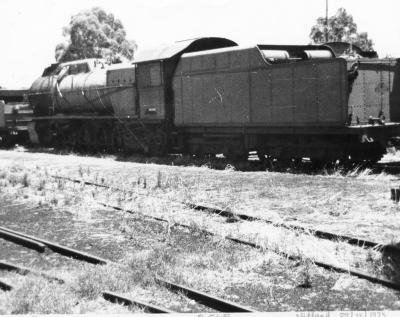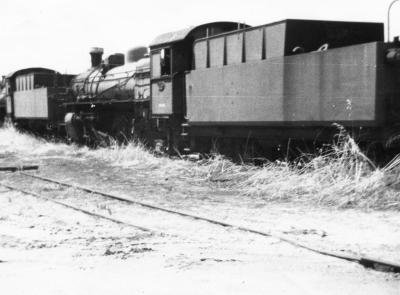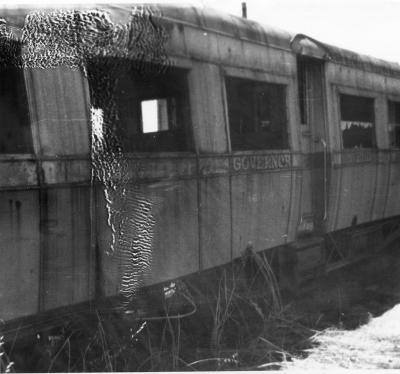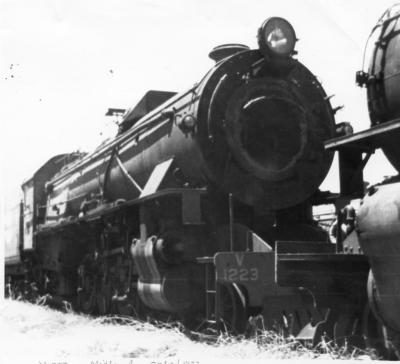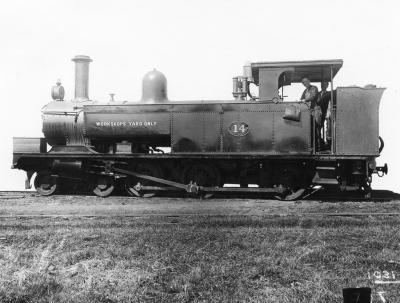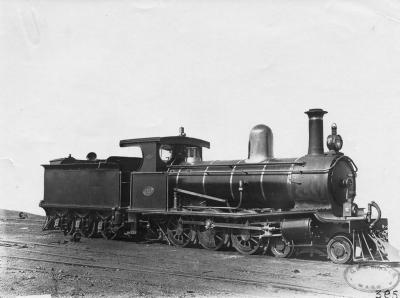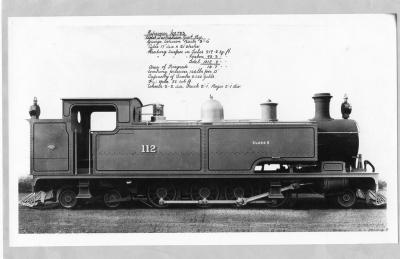Passenger carriage
1885Indian red painted wooden body with end platforms on a metal frame sitting on bogies. Windows along each side, door entry of platform together with a side double door. Canvas covered timber roof painted stone colour.
Interior in three sections ie first class with replica of seating, second class and a brake compartment section where side doors are located.
AG 14 arrived at Fremantle in 1885 on the SS Glenmorven. The WA population was still quite small. It was one of the first carriages put together here. The differences between the 1st class and 2nd class sections is evident.
It was built with bogies, rather than with fixed wheels, and was longer than the older carriages. This gave the passengers a more comfortable ride. It often went to York, which was as far as the railway went. Then gold was discovered and the state boomed.
About 1900, after the railway reached Kalgoorlie, AG 14 went there to run the suburban trains. The railway was the main transport to work for the miners on the Boulder loopline. Boulder Station was busier than Perth and second only to Sydney for the number of trains.
Coming back to Perth in 1904 it was used on a train made up of old AG cars to take the workers to the Railway Workshops at Midland. After complaints from the workers it became known as the Workshops ‘rattler’.
During the 1930s depression it was converted into a passenger brake van. In 1947 it was too old for passenger services and converted to a breakdown van for use at accident and derailment sites and was to Meekathara. More red dust!
In 1972 it was retired and now is the only one of the bogie carriages from the 1880s that still exists. Rail Heritage WA won a National Award for the restoration of AG 14.
AG 14 was never converted to electricity, so the only lighting it ever had was kerosene lamps placed in a hole if the roof.
Details
Details
plaque showing makers details fro Metropolitan Railway Carriage and Wagon Co, Birmingham
Links to pre Gold rush era of WA as well of gold miners in Kalgoorlie and then workers to WAGR Workshops in Midland.
Classified by National Trust of Australia (WA).
AG 14 has historic significance for its links with the development of railways in WA prior to the goldrush as well as the later Kalgoorlie-Boulder suburban system.
AG 14 has historic significance, enhanced by rarity value, as it is believed to be the sole remaining representative of the first class of bogie carriages to enter service in this state.
AG 14 has scientific / research significance for its demonstration of the change in technology to bogie carriages and as the only such carriage to not have electricity installed at any time in its working life.
Other items from Rail Heritage WA
- Bullion van
- Steam locomotive Katie
- Steam Locomotive
- Cup Cue Railway Refreshment Rooms
- WAGR Governor class railcar at Midland Workships
- WAGR S class at Midland Workshops
- WAGR Pm class at Midland Workshops
- WAGR Governor class railcar at Midland Workshops, side view
- WAGR V class at Midland Workshops
- WAGR B class at Midland Workshops
- WAGR G class
- WAGR K class Builder's Photo
Scan this QR code to open this page on your phone ->



